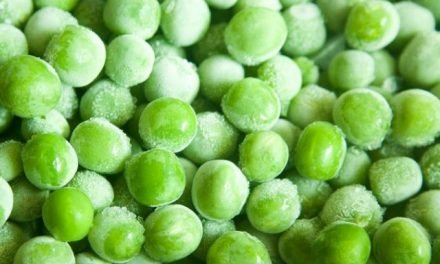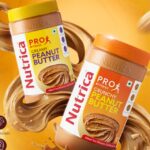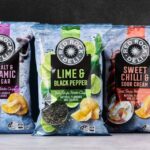Effect on foods during frozen storage
As most microbial and biochemical processes are slowed down drastically, food does not undergo many changes due to these. However, some other changes may take place. As water turns to ice, there is an increase in volume, so if there is a large amount of moisture in food, as the tissue water becomes ice, tissue structure may disintegrate, and upon thawing, the original shape may not be regained. For example, fruit pieces after frozen storage, when thawed, may become mushy or too soft. Hence, fruits are generally not frozen. Tomatoes become very mushy. Even lettuce loses its snap when frozen and thawed.
Advantages of frozen foods
As lowering the temperature slows down biochemical and microbial changes, foods retain their quality both in terms of sensory as well as nutritive values. Even though some losses are seen in preliminary steps prior to the freezing process due to blanching etc. overall, the frozen stored foods have the same quality as compared to fresh foods.
When you have a garden in your backyard and you freshly harvest vegetables and cook them, you will probably get the best quality, not matched by frozen vegetables. However, when vegetables are to be grown in fields far away from cities and transported for hundreds of kilometres to markets and may sit in godowns or warehouses for many hours if not days, then their nutritive and sensory values are lost to a great extent.

They are called fresh only because they are raw and not processed. They are even harvested before they reach the peak of their quality because then they are harder and can withstand the mechanical damage of transport and storage.
Frozen vegetables, when harvested, are at their peak quality, and there is a slight loss of vitamins due to preliminary treatments. However, scientists at the University of California, Davis found that the Vitamin C of fruits and vegetables studied was higher in frozen samples in some, while others showed no difference. Similar observations were made in the case of riboflavin and beta carotene.
Another study at the University of Georgia showed that with broccoli, cauliflower, corn, green beans, green peas, spinach, blueberries, and strawberries, there were very few differences in vitamin C, beta carotene, and folate, which showed very little difference between frozen and fresh.
Overall economics of frozen foods
When in season, the fruits and vegetables are inexpensive, but when the season is over, they become quite expensive. Similar variations are seen when farmers get bumper crops while prices crash, while when the crop is not reasonable, prices shoot. This sudden change can affect farmers as well as consumers adversely economically. Frozen foods are produced in large quantities when the crop is excellent, and this can last for several months, so that it can smooth the ups and downs of the market. Also, when agricultural produce is processed, most of the waste remains near the factory, which is usually situated near farms, and that could be used for animal food. In cities where only edible portions are consumed, the waste generated is much less.
Cold chain and storage in retails and homes
India did not have a good cold chain for many decades. Even after being brought to the marketplace, retail had less capacity for cold storage, and awareness was also lower. Even the supply of constant electricity was a problem. At home, the refrigerators had freezer compartments only for ice.
Now it is getting better, so when food is chilled after harvest and stored till processed into frozen food, it is then transported while frozen in refrigerated trucks or trains. Marketplaces also have adequate cold facilities, and consumers also have deep freezers to store them till consumption. Hence, the chain is more complete now for better utilisation of frozen foods with better quality retention. Even such things as ice cream are being delivered using dry ice-cooled boxes.
Newer trends in frozen foods
Originally, frozen foods were marketed as high-quality frozen ingredients such as fruits, vegetables, meats, fish, and others. There was also demand from consumers for some convenience, so there were products which were sectioned, seasoned, and also with some other ingredients. These were all products that were basically preserved high-quality ingredients that were as good as fresh in sensory and nutritive quality.
However, there are also many products that were almost finished and ready to just heat and eat. Some products were also made partially so they needed final cooking or baking or frying such as parathas, samosas, french fries, pizzas, etc. The epitome of the convenience was the TV dinners which have all portions of dinners including vegetable, bread, meat, dessert, etc. The latter products are marketed more from convenience points rather than quality or nutrition points.
A huge boost is given due to an increase in Indians eating out or ordering food from outside. As more housewives are working and also those who are homemakers want to enjoy more time with their families and friends rather than cooking, this trend is seen. Restaurants and fast-food chains also prefer to use many of the ready ingredients, put them together, and finish cooking to serve their customers without making them wait. They also save a lot of space and manpower when they use these frozen ingredients, which remain in excellent condition for a long time.
FAQs about Frozen Foods
Why are frozen foods becoming more popular?
The rise in demand for frozen foods is driven by the increasing number of working women, higher household incomes, and the desire for convenient, ready-to-eat meals with minimal preparation time.
How does freezing help preserve food?
Freezing slows down biochemical and microbial processes, preserving food quality. By lowering temperatures, freezing halts the growth of microbes and enzymes, keeping the food fresh for longer.
What is the difference between chilling and freezing?
Chilling involves lowering the temperature of food to 4-10°C, slowing microbial growth, while freezing involves temperatures below 0°C, freezing water in the food and effectively stopping microbial activity.
What are the advantages of frozen foods over fresh produce?
Frozen foods retain their nutritional value, often as good as or better than fresh foods, since they are harvested at peak quality and preserved quickly, whereas fresh produce can lose quality during transport and storage.
How does the freezing process affect the texture of certain foods?
Freezing can cause foods with high moisture content, like fruits and vegetables, to lose their texture, becoming mushy when thawed. Foods like tomatoes and lettuce are typically not ideal for freezing.
What is the role of cold chains in the frozen food industry?
Cold chains are essential for maintaining the quality of frozen foods. In India, advancements in cold storage and refrigerated transport have improved the availability and quality retention of frozen foods in both retail and households.
‘Processed Food Industry’: The Voice of Food Processing Industry
Processed Food Industry (PFI) is a premier English-language monthly B2B publication (ISSN 09721649) headquartered in New Delhi, catering to the vibrant and ever-evolving food processing industry. While we don’t claim to be the largest or most widely read, our proud legacy of over 27 years—publishing continuously since 1997—has earned us the trust of industry professionals as a reliable source of insights and information.
If your goal is to tap into the booming Indian and South Asian markets to promote your equipment, technology, software, or consumables, PFI is your strategic partner. With our hybrid approach across print, web, and social media, we help you establish strong brand recognition rooted in market relevance. Backed by a team of top-tier technical writers, we’re ready to work closely with you and your customers to craft compelling content that drives results.
India and South Asia’s food industry is expanding rapidly, driven by efficiency and cutting-edge innovations. Don’t miss the opportunity to elevate your brand and engage with this dynamic market. Get our 2025 media kit to fine-tune your marketing strategy, increase your visibility, and convert potential customers into valuable conversations. Additionally, ask for a sample copy of our monthly magazine and experience the quality and relevance we deliver.
Let us help you define your role in the future of the food processing industry.

















